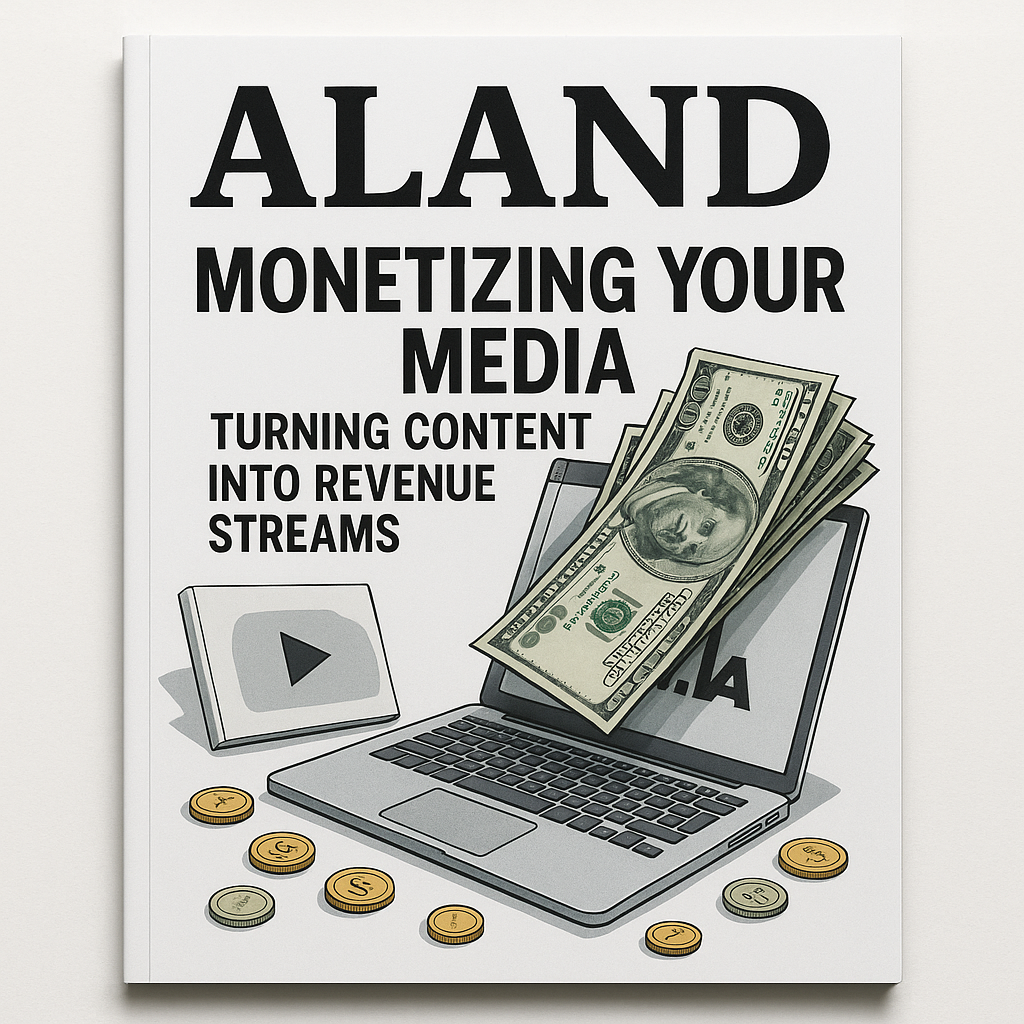Monetizing Your Media: Turning Content into Revenue Streams
- Published Date: 9th Jun, 2025
-
4.8★ ★ ★ ★ ★(105)

By Dr. Pooyan Ghamari, Swiss Economist and Founder of the ALand Platform
The Economics of Content in a New Era
The digital economy has produced a paradox: content has never been more abundant, but genuine influence—and sustainable income—remains elusive for most creators and businesses. We live in a world where everyone is a publisher, yet only a fraction learn how to transform attention into recurring, diversified revenue streams.
Why do some media brands and content entrepreneurs become category leaders while others, equally creative, languish at the margins?
The answer is rarely just about talent or production value. It is about the architecture of monetization—a strategic, deliberate process that turns media assets into capital, community into customers, and expertise into value.
In my years as an economist and founder of a global platform, I’ve seen this evolution firsthand: content, when systematized and commercialized thoughtfully, becomes not only a marketing tool, but the beating heart of scalable business models.
This article provides a blueprint for professionals, investors, and founders seeking to master this transformation. It’s time to move beyond the vanity of virality and focus on the practical, powerful levers that convert content into income.
The Monetization Mindset: Beyond Ads and Affiliates
Rethinking the Value of Content
For too long, the digital conversation has revolved around advertising—banner ads, sponsorships, influencer posts. While these remain valid, they are also the most crowded, commoditized, and low-margin forms of content monetization.
True success is built on deeper foundations: owning the relationship with your audience, packaging unique insights, and solving specific, premium problems for people willing to pay.
Information Products: The Digital Gold Mine
Today’s most profitable media empires are not built on selling access to eyeballs, but access to expertise.
Courses, eBooks, paid newsletters, and subscription communities enable creators and companies to serve the most engaged segment of their audience—while controlling margins and customer experience.
Wizard Action Plan: Building Revenue, Step by Step
1. Identify the Top Three Information Products Your Audience Would Buy
How:
-
Survey your most loyal subscribers and analyze comment threads, search data, and past purchasing behavior.
-
Test interest with polls or open questions: “Would you buy a deep-dive eBook? Join a live course? Pay for insider access?”
-
Research what your peers and competitors successfully sell in your space.
-
Shortlist the three product types with highest indicated demand (courses, eBooks, subscriptions, premium webinars, templates, etc.).
2. Pre-Sell a Pilot Product to Your Engaged Subscribers
How:
-
Craft a simple landing page or email pitch for your “pilot” product.
-
Offer exclusive pricing, bonuses, or limited slots for early adopters.
-
Collect payment or commitment upfront, using sales as a measure of real demand.
-
Gather immediate feedback from buyers to refine the product before full launch.
3. Bundle Your Best Insights as Premium Gated Content
How:
-
Audit your archives for “evergreen” insights, playbooks, or data sets that solve big problems.
-
Package these into downloadable eBooks, exclusive video libraries, or gated community forums.
-
Use teasers, previews, or limited free trials to drive curiosity and conversions.
-
Continually update and expand premium bundles to increase retention and lifetime value.
4. Partner with Complementary Brands for Joint Offers
How:
-
Identify brands, creators, or platforms with aligned (but not competing) audiences.
-
Design co-branded packages: a course + software license, an eBook + consulting session, a webinar + discount to a partner service.
-
Run limited-time joint promotions, cross-promote to each other’s lists, and share revenue or leads.
-
Track which collaborations drive the highest ROI and deepen for the next cycle.
5. Track Conversions and Scale Successful Revenue Models
How:
-
Use analytics dashboards to monitor conversion rates, upsells, refund rates, and subscriber retention.
-
Regularly survey buyers for product feedback and new content requests.
-
Scale successful models with paid ads, affiliate programs, or content syndication.
-
Systematize fulfillment and support to maintain customer experience as you grow.
The Economics of Content Monetization: From Niche to Scale
-
Direct-to-Audience Models: Bypass gatekeepers and algorithms. When you own your customer list, you own your business destiny.
-
Recurring Revenue: Subscriptions and memberships transform erratic income into predictable cash flow—crucial for valuation and investment.
-
Global Leverage: Digital products scale across borders at near-zero marginal cost, opening new markets and pricing strategies.
-
Brand Authority: Premium content positions you as a trusted expert, attracting not just buyers but partners, investors, and media.
The Future Belongs to Content Entrepreneurs
Content monetization is no longer a fringe opportunity—it is the new center of the digital business universe.
Success will favor those who think like investors and operators, not just creators: validating markets, building systems, and leveraging every asset to serve and scale.
In the years ahead, your media business will not be measured by followers or pageviews, but by the resilience and diversity of its revenue streams.
About the Author
Dr. Pooyan Ghamari is a Swiss Economist, global strategist, and Founder of the ALand Platform. He is recognized for pioneering work in digital economies, investment strategy, and real estate innovation. Dr. Ghamari helps leaders, creators, and entrepreneurs build resilient business models that blend content excellence with financial sophistication—driving sustainable, global impact in the modern economy.

